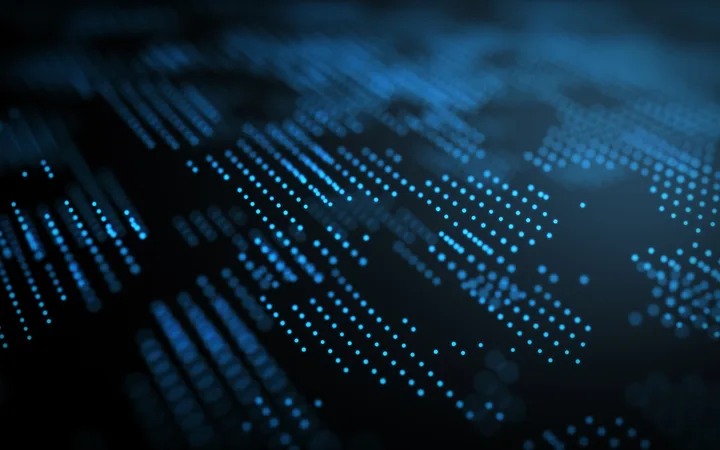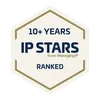Most technologies can be protected with one of the four main types of intellectual property (IP) rights — patents, trade marks, designs and copyright. Software is no different and this short guide will inform you how each IP right can be applied to software-related inventions, as well as how to navigate the sometimes tricky patentability exclusions at the UK Intellectual Property Office (UKIPO) and European Patent Office (EPO).
How to protect software with patents#
Patents protect the technical ideas that underpin the way software works. The catch is that patents are more difficult and costly to obtain than other IP rights.
For a patent to be granted, the application must meet the criteria of novelty and inventive step. All computer-implemented inventions (and therefore software) need to pass a simple test to be eligible for a patent — namely, it must be shown that the software overcomes a technical problem.
In practice, this can be achieved in a few ways. One is to show that the software is linked to a technical feature outside of a computer. Software that controls or generates information from (for example) a tool of some kind, a vehicle, etc. could be considered to solve a technical problem.
Another way to overcome the patentability hurdle is to show that the software somehow improves the way the computer works — for example, through improved traffic handling or achieving savings in processing power, time or energy consumption. Related to this, a further way is to show that the software provides inherently technical advantages in the way that it implements a process. This could be through improving security/privacy or reducing the chance of attacks by malign parties.
Ultimately, you need to show that the software provides a technical advantage that goes above and beyond normal execution of code when running on a computer system.
How to protect software with trade marks#
Trade marks offer protection for certain aspects of software, including words and logos. Trade marks can’t be used to protect any of the underlying technical aspects of software.
How to protect software with design rights#
Designs offer both registered and unregistered forms of protection for the way things look. For example, screen displays and graphics including GUIs can be protected by design rights. However, as with trade marks, technical aspects of software can’t be protected using designs.
How to protect software with copyright#
Copyright arises automatically, so is free, and protects source code as a ‘literary work’. It’s important to note that only the source code is protected by copyright — not the ideas contained within it.
Since you can’t register copyright in the UK, to determine that infringement has taken place, it must be proven that a third party has directly copied the copyright-protected source code. This can be difficult and costly to achieve.
While copyright protects the underlying code of software, it doesn’t protect the underlying technical aspects of how it works.
Navigating patentability exclusions for computer-implemented inventions#
As the only route to securing protection for the underlying technical aspects of software, patents should be a crucial part of your IP strategy.
UK Intellectual Property Office#
In the UK, the hurdle to gaining a patent for a computer-implemented invention comes down to determining (via the Aerotel/Macrossan test) whether the subject matter of the claims falls under one or more of the exclusions to patentability.
The Aerotel/Macrossan test used in the UK comprises four steps, which are as follows:
(1) Properly construe the claim;
(2) identify the actual contribution;
(3) ask whether it falls solely within the excluded subject matter;
(4) check whether the actual or alleged contribution is actually technical in nature.
The AT&T signposts are used by UKIPO Examiners and give some direction to what makes an invention patentable at the UKIPO.
The signposts are:
(i) whether the claimed technical effect has a technical effect on a process which is carried on outside the computer
(ii) whether the claimed technical effect operates at the level of the architecture of the computer; that is to say, whether the effect is produced irrespective of the data being processed or the applications being run
(iii) whether the claimed technical effect results in the computer being made to operate in a new way
(iv) whether the program makes the computer a better computer in the sense of running more efficiently and effectively as a computer
(v) whether the perceived problem is overcome by the claimed invention as opposed to merely being circumvented.
European Patent Office#
European (EP) patent applications can be validated in many European countries including the UK (yes, even post-Brexit). Patent prosecution in Europe is, however, much more expensive than in the UK alone.
Whether a software patent application can overcome the obstacles to patentability at the EPO often falls on determining whether the invention involves an inventive step.
The problem-solution approach is used at the EPO to assess inventive step. This contains four main stages:
(i) determining the ‘closest prior art’,
(ii) establishing the ‘technical effect’ that the claimed novel or different features have,
(iii) establishing the ‘objective technical problem’ to be solved, and
(iv) considering whether or not the claimed invention, starting from the closest prior art and the objective technical problem, would have been obvious to a skilled person.
The Comvik decision underpins the European application of the problem-solution approach for computer implemented inventions. The differences with respect to the closest prior art are determined and only those that contribute to the technical character are considered for inventive step. Non-technical elements, if not disclosed in the prior art, are included in the technical problem such that they would be obvious to the skilled person when determining a solution. Accordingly, non-technical elements do not contribute to inventive step.
Does the software solve a technical problem?#
Although the tests used at the UKIPO and the EPO are slightly different, in many cases the result is the same. If the software provides a technical solution to a technical problem, it is inherently patentable. This is often also true for other jurisdictions.





















